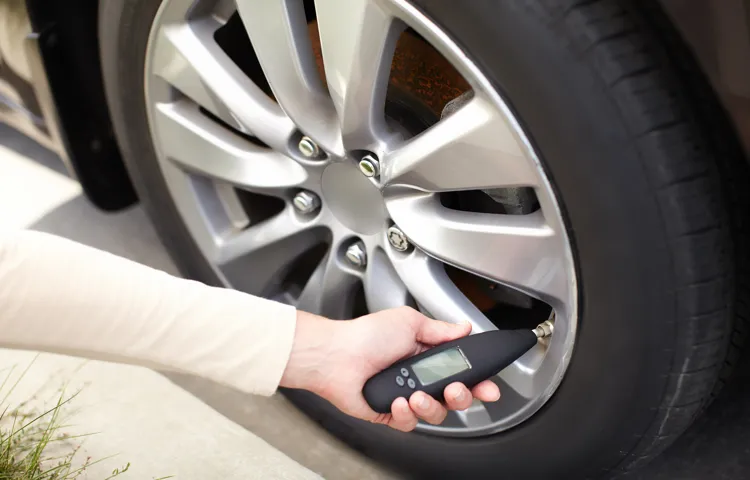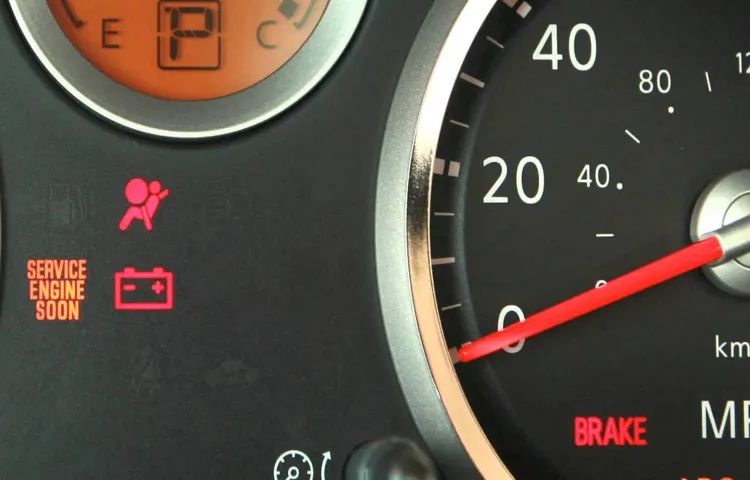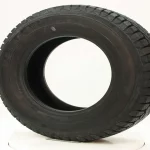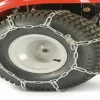If you own a Nissan Sentra, one of the most important things you can do to keep it running smoothly and safely is to check the tire pressure regularly. Proper tire pressure is essential for optimal handling, fuel economy, and overall tire health. But how exactly do you check the tire pressure on your Nissan Sentra? Don’t worry, it’s easier than you might think.
In this blog, we’ll show you step-by-step how to check the tire pressure on your Nissan Sentra, so you can stay on top of your car’s maintenance and get the most out of your driving experience. So, let’s get started!
Table of Contents
Why Checking Tire Pressure is Important
If you own a Nissan Sentra, you might be wondering how to check tire pressure on your vehicle. It’s important to keep your tires properly inflated for many reasons. First, it can improve your fuel efficiency and save you money in the long run.
It can also improve braking and handling, which is crucial for your safety on the road. Checking tire pressure is a simple process that can be done at home or at a gas station. All you need is a tire pressure gauge and access to your car’s tires.
Simply remove the valve cap and press the gauge onto the valve stem. The gauge should give you a reading in PSI (pounds per square inch), which you can compare to the recommended tire pressure listed in your owner’s manual or on the sticker located on the inside of your driver’s side door. If the pressure is too low, use an air compressor to fill the tire to the recommended amount.
By taking the time to check your tire pressure regularly, you can extend the life of your tires and keep yourself safer on the road.
Improves Fuel Efficiency
Checking tire pressure is one of the easiest things you can do to improve fuel efficiency. Not only will it save money and reduce your environmental impact, but it will also improve safety on the road. When your tires are underinflated, they have more rolling resistance, which means your car has to work harder to move forward.
This extra effort means your car is using more fuel than it needs to. In fact, studies have shown that underinflated tires can reduce fuel efficiency by up to 3%. That may not seem like a lot, but over time it can add up to a significant amount of money wasted on gas.
On the other hand, properly inflated tires can improve fuel efficiency by up to 3%, giving you more miles per gallon and saving you money at the pump. So, if you want to save money and reduce your carbon footprint, make sure to regularly check your tire pressure. It’s a quick and easy task that can make a big difference in your wallet and the environment.

Increases Safety
Checking your tire pressure is vital to ensuring a safe driving experience. When your tires are not properly inflated, it can lead to decreased fuel efficiency, increased tire wear, and even dangerous blowouts. One of the most common causes of tire failure on the road is due to underinflation.
This type of failure is preventable with simple, routine checks of your tire pressure. By maintaining the correct tire pressure, you not only increase your safety on the road, but also prolong the life of your tires. So, make it a habit to check your tire pressure regularly.
Whether that means buying a gauge or taking advantage of a free tire pressure check at a local gas station, the small amount of time and effort it takes to do so is well worth it in the long run.
Tools Needed to Check Tire Pressure
If you’re wondering how to check tire pressure on your Nissan Sentra, there are a few important tools you’ll need to get started. First and foremost, you’ll need a good quality tire pressure gauge. This essential tool allows you to measure the amount of air in your tires accurately.
You can find these gauges at most automotive stores, or you can even purchase one online. In addition to the pressure gauge, you’ll also need a tire inflator. This tool allows you to add air to your tires when needed, ensuring that they stay at the correct pressure level.
You can find a tire inflator at most automotive stores as well, or you may have one included with your vehicle’s emergency kit. Once you have both of these tools, you’ll be ready to check your Nissan Sentra’s tire pressure. Remember, maintaining the correct tire pressure is essential for safe driving and optimal vehicle performance, so it’s important to check your tires regularly!
Tire Pressure Gauge
If you’re looking to check the tire pressure on your vehicle, you’ll need a tire pressure gauge tool to do so. These tools are essential for maintaining the safety and performance of your tires. A tire pressure gauge is a small, handheld device that measures the pressure in your tires.
It’s easy to use and typically inexpensive to purchase. You simply press the gauge onto the valve stem of your tire, and it will display the pressure in PSI (pounds per square inch). It’s important to check your tire pressure regularly to ensure that your tires are properly inflated.
Overinflated or underinflated tires can be dangerous, cause uneven tire wear, and decrease fuel efficiency. Using a tire pressure gauge is a simple and effective way to keep your tires at the proper pressure and extend their lifespan.
Air Compressor (optional)
If you’re looking to ensure the safety and efficiency of your vehicle, checking tire pressure is an important step to take. To do this, you’ll need a few essential tools on hand. One such tool is an air compressor, although it’s not strictly necessary.
An air compressor can save you time and money in the long run by allowing you to fill and inflate your tires whenever they run low. Other tools you’ll need in the process of checking tire pressure include a tire pressure gauge, which measures the air pressure inside the tire, as well as a valve stem tool to remove and replace the valve stem cap. It’s also helpful to have a pair of gloves handy to protect your hands from dirt and debris when handling the tires.
With these tools and a little bit of know-how, you can easily and efficiently check your tire pressure regularly, ensuring that your vehicle is always running at its best.
Steps to Check Tire Pressure on Nissan Sentra
If you want to ensure your Nissan Sentra is running smoothly, checking your tire pressure is an essential maintenance task you should never skip. The good news is that checking your Nissan Sentra’s tire pressure is a relatively quick and straightforward task. First, locate your vehicle’s tire pressure label typically found inside the driver’s door or glove compartment.
This label includes the recommended tire pressure for your vehicle’s front and rear tires. Next, use a tire pressure gauge to check the pressure of each tire. Unscrew the valve cap, place the gauge over the valve stem, and press down firmly.
Read the air pressure on the gauge and compare it with the recommended tire pressure on the label. If the pressure is low, add air until you reach the recommended PSI level. Repeat the process for all four tires, and don’t forget to put the valve caps back on when finished.
Checking your Nissan Sentra’s tire pressure regularly will help ensure your car stays running efficiently and safely.
Step 1: Check Owner’s Manual
One of the essential aspects of maintaining a car’s safety and performance is regularly checking its tire pressure. If you own a Nissan Sentra and want to ensure that your tires are in good shape, the first step is to consult the owner’s manual. It contains detailed information about your vehicle, including the recommended tire pressure for your specific make and model.
This important step will prevent you from overinflating or underinflating your tires, which can lead to accidents, poor handling, and reduced gas mileage. Once you have noted the recommended tire pressure range, use a tire gauge to check each tire’s pressure and adjust it accordingly. Neglecting tire maintenance can result in expensive repairs or replacements, so make sure to take action early and often to keep your ride safe and smooth.
Step 2: Park Your Car on a Level Surface
When it comes to ensuring the safety and optimal performance of your Nissan Sentra, checking the tire pressure should be a top priority. The first step towards checking the tire pressure involves parking your car on a level surface. This ensures that any readings you obtain are accurate and reflective of the true tire pressure.
A sloping or tilted surface can affect the pressure readings, leading to inaccurate results. Hence, it’s best to find a flat and level surface that can help you accurately measure the tire pressure. Once you’ve found a suitable location, turn off the engine, engage the parking brake, and take out the tire pressure gauge.
These steps can seem like a small inconvenience, but they go a long way in ensuring that your Nissan Sentra remains safe, efficient, and provides you with the smoothest ride possible.
Step 3: Remove Valve Cap from the Tire
When it comes to maintaining your Nissan Sentra, one crucial aspect you should never overlook is checking your tire pressure regularly. It’s a relatively simple task, but it can save you from a potential road accident and prolong your tire’s lifespan. If you’re unsure how to begin, start by removing the valve cap from the tire.
This step is critical because it allows you to access the valve stem, which you’ll need to attach the pressure gauge to. The valve cap may seem insignificant, but it acts as a protective cover to prevent dirt, dust, and moisture from clogging the valve stem. Make sure to keep it secure and clean to prevent damage to the valve and maintain proper tire inflation.
Once you’ve removed the valve cap, you’re ready to move on to the next step in checking your Nissan Sentra’s tire pressure.
Step 4: Press Tire Gauge into Valve Stem
When it comes to checking tire pressure on your Nissan Sentra, there are a few simple steps you can follow to ensure your tires are properly inflated. Step four is an important one: pressing the tire gauge into the valve stem. This is where you’ll get a reading of the tire pressure, so it’s important to make sure the gauge is properly seated in the valve stem.
You’ll want to press the gauge evenly and firmly to get an accurate reading. Too much pressure or too little pressure can cause problems with your vehicle’s handling and fuel economy, so taking the time to ensure your tires are properly inflated is an important part of maintaining your Nissan Sentra. By following these simple steps, you can enjoy a smoother, safer ride.
Step 5: Read the Tire Pressure
To check the tire pressure on your Nissan Sentra, you need to follow specific steps that include gathering necessary tools, locating the tire inflation point, unscrewing the valve cap, filling the tire with air, and finally, reading the tire pressure. Once you’ve filled the tire with enough air, you need to check its pressure using a tire pressure gauge. This tool allows you to get accurate measurements in pounds per square inch (PSI).
To use it, you simply need to place the gauge on the tire valve stem and press it down to ensure a tight seal. The gauge’s reading will provide you with the tire’s PSI, which you need to compare to the recommended PSI found on your Nissan Sentra owner’s manual. If the tire pressure is too low or high, you need to adjust it accordingly and recheck until you reach the optimal PSI.
By maintaining the right tire pressure, you’ll boost your vehicle’s fuel economy, handling, and overall performance while ensuring your safety on the road.
Step 6: Adjust Tire Pressure if Necessary
Checking the tire pressure on your Nissan Sentra is an essential step in ensuring safe and efficient driving. Once you have located the tire pressure sticker, which is usually located on the driver’s side door jamb, use a tire pressure gauge to check each tire’s pressure. If you discover that one or more tires have low pressure, use an air compressor to inflate them to the recommended PSI listed on the tire pressure sticker.
If, on the other hand, one or more tires have high pressure, use the gauge’s release valve to let out some air until the pressure reaches the recommended level. It’s important to note that tire pressure can fluctuate depending on external factors such as weather and driving conditions, so it’s best to check them regularly to ensure optimal performance. With a little care and attention, you can enjoy a smooth and safe driving experience in your Nissan Sentra.
Step 7: Repeat for All Tires
When checking the tire pressure on your Nissan Sentra, it’s important to remember to repeat the process for all tires. Although you might think that each tire has the same pressure, there could be a slight difference that could affect the handling of your car. Repeat the steps for each tire, ensuring that you have the correct amount of pressure in each one.
Don’t forget to check the spare tire as well, as it’s just as important in case of emergencies. By taking the time to check each tire, you’ll ensure that your Nissan Sentra is running smoothly and safely on the road.
Conclusion
Checking the tire pressure on a Nissan Sentra is easier than falling off a log, but much less painful. With a little bit of know-how and the right tools, you can ensure that your tires are properly inflated and ready for the road ahead. Remember to check your tire pressure regularly, and don’t be afraid to ask for help if you need it.
Your safety is important, and taking good care of your Nissan Sentra’s tires is the first step towards smooth sailing (or driving, in this case). So go ahead, check that tire pressure like a pro, and enjoy your ride with confidence!”
Regularly Checking Tire Pressure
As a car owner, regularly checking your tire pressure is crucial for both your safety and the performance of your vehicle. If you own a Nissan Sentra, here are the steps you can take to check your tire pressure. First, make sure that your car is parked on level ground.
You can then locate the tire pressure sticker located on the driver’s side door jamb. This sticker will indicate the recommended tire pressure for your specific Nissan Sentra model. Next, remove the valve cap from the tire, and firmly press the tire pressure gauge onto the valve stem.
You should hear a slight hiss sound, and the gauge will provide you with a reading of your tire pressure. If the reading is lower than recommended, you can add air to your tire until it reaches the appropriate level. On the other hand, if the reading is higher than the recommended level, you can release some air until it reaches the correct pressure.
Remember to check all four of your Nissan Sentra’s tires, as the pressure may vary between them. By following these steps, you’ll be able to ensure that your Nissan Sentra is running at its best and avoid any potential tire-related incidents on the road.
FAQs
What is the recommended tire pressure for a Nissan Sentra?
The recommended tire pressure for a Nissan Sentra is usually between 30-35 PSI.
How do I check the tire pressure on my Nissan Sentra?
To check the tire pressure on your Nissan Sentra, use a tire pressure gauge to measure the PSI of each tire and compare it to the recommended pressure found in the owner’s manual.
Can I rely on the tire pressure monitoring system in my Nissan Sentra?
While the tire pressure monitoring system in your Nissan Sentra can provide a warning if your tire pressure is low, it should not be relied upon as the sole method of monitoring tire pressure. It is still important to manually check the pressure with a gauge on a regular basis.
How often should I check the tire pressure on my Nissan Sentra?
It is recommended to check the tire pressure on your Nissan Sentra at least once a month, or before any long trips.
What should I do if my Nissan Sentra’s tire pressure is low?
If your Nissan Sentra’s tire pressure is low, add air to the tires until they reach the recommended pressure. Be sure to check the pressure again once the tires have cooled down after driving.
Can improper tire pressure affect the fuel economy of my Nissan Sentra?
Yes, having improper tire pressure can significantly affect the fuel economy of your Nissan Sentra. It is important to maintain the proper tire pressure to ensure optimal fuel efficiency.
What other problems can be caused by improper tire pressure on a Nissan Sentra?
Improper tire pressure on a Nissan Sentra can also cause uneven wear on the tires, decreased handling and traction, and potentially lead to tire failure or blowouts.



